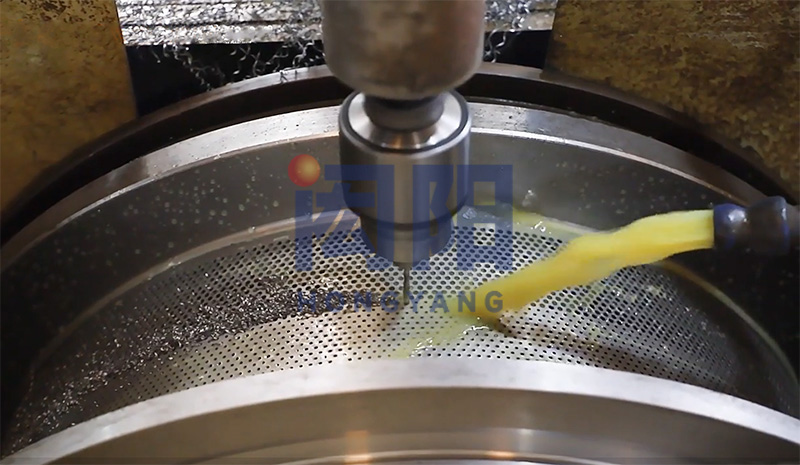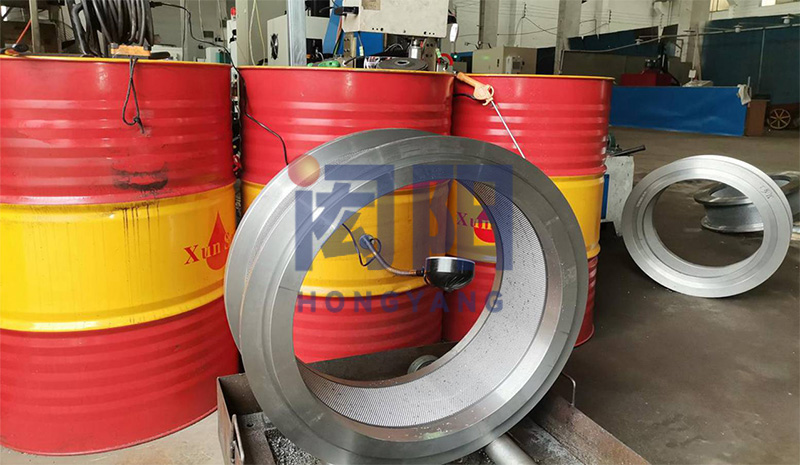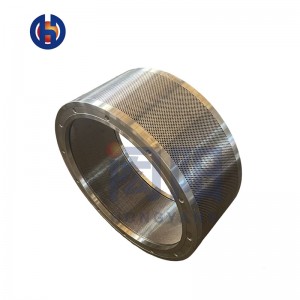IDAH Ring Die Pellet Machine Parts
IDAH Ring Die
1. Select high-quality raw materials, secondary steelmaking, and defoaming steel billets;
2. Ring die material: X46Cr13 (stainless steel)
3. Multihead imported gun drill, one-time molding, high quality, low hole plugging rate, and high discharge rate;
4. The combination of vacuum furnace and continuous quenching furnace enhances the service life;
5. Customize the compression ratio and strength according to the customer’s raw materials and requirements;
6. Strictly carry out the quality inspection during the entire production process to ensure product quality.
| S/N | Model | SizeOD*ID*overall width*pad width -mm | Hole size mm |
| 1 | IDAH530 | 680*530*258*172 | 1-12 |
| 2 | IDAH530F | 680*530*278*172 | 1-12 |
| 3 | IDAH635D | 790*635*294*194 | 1-12 |
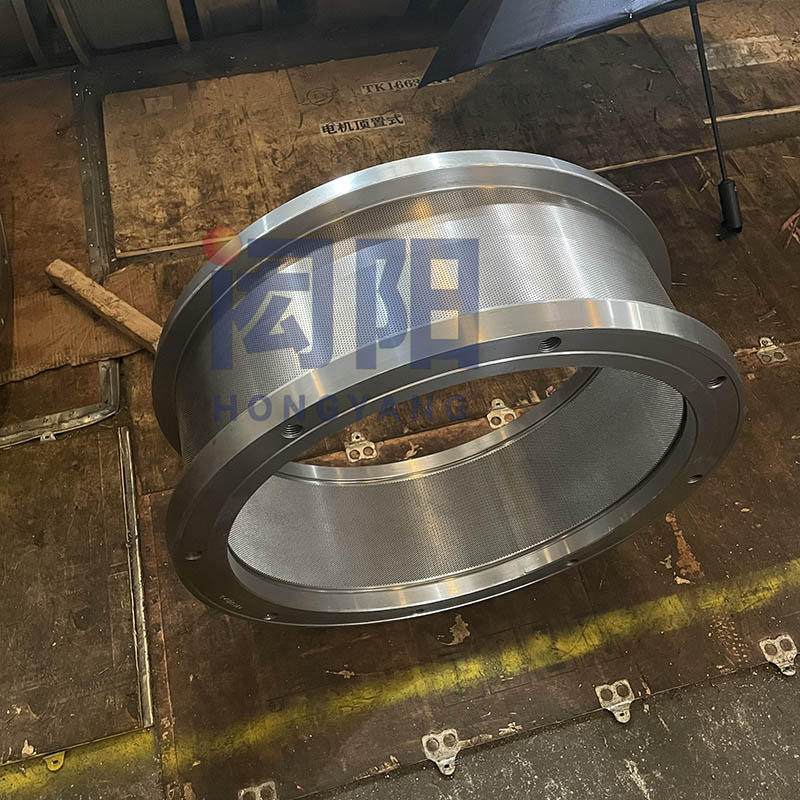
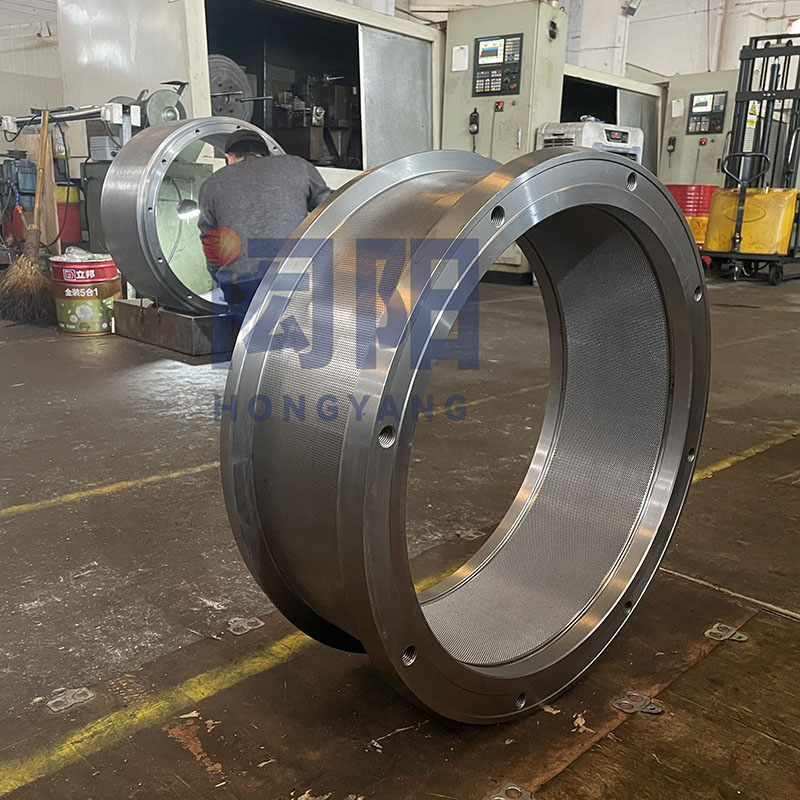
Compression Ratio
What is the compression ratio of ring die?
The compression ratio of the ring die is the ratio of the effective working length of the ring die hole and the diameter of the die hole. It is an index reflecting the extrusion strength of the pellet feed. The larger the compression ratio is, the stronger the extruded pellets are, but the output will be relatively lower. The smaller the compression ratio, the rougher the surface of the pellet will be and the bad forming will be, but the output will be high.
How to choose the right compression ratio?
Due to different formulations, raw materials, and granulation processes, the selection of an appropriate compression ratio depends on the situation. The following is a general range based on experience:
Livestock and poultry feeds: 1:8 to 13; Fish feeds: 1:11 to 16;
Shrimp feeds: 1:16 to 25; Heat-sensitive feeds: 1: 7 to 9; Forage and straw feeds: 1: 5 to 7.
After using a ring die, the feed producer can also adjust the aperture and compression ratio of the next ring die according to the external feeling of the feed.
Processing Technology
Ring die processing technology: Cutting→Forging→Roughing→Normalizing→Finishing→Quenching and tempering→ Finishing→Drilling hole→Nitriding→Polishing→Pressure test→ Coating resistance→Rusty oil→Check and save options


